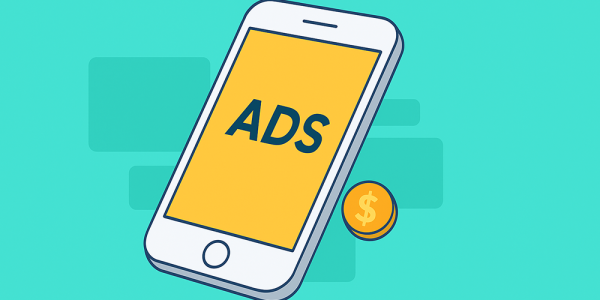Skip the App Store - Here’s How DTC Brands Can Take Growth Into Their Own Hands


Post-Apple vs. Epic, the race is on to break free from the app store duopoly - and those leaning into DTC and alternative distribution are already pulling ahead.
At MAU this year, we caught up with Ben Holmes, GM of Demand at Digital Turbine, who discusses market trends, the rising importance of LTV and first-party data, and offers a three-step roadmap for reducing reliance on Apple and Google.
Developers testing alternative app strategies will be first movers in a shifting market
The developers who are already testing alternative strategies - whether through DTC (direct-to-consumer) or alternative app stores - are positioning themselves to be ready when change becomes mandatory. While many are hesitant, citing roadmap impact and limited resources, those who’ve begun testing are seeing strong results. As scaling becomes easier in the coming months, these early movers will be best positioned to capitalize.
High-monetization apps benefit most from early adoption of non-traditional channels
The clearest gains right now are among developers with mobile games that rely heavily on in-app purchases. Traditional app stores take up to 30%. If a developer can lower that to 10% or 20% using alternative methods, the savings directly improve LTV. It's a straightforward equation: lower fees mean higher margins, better ROI, and improved ROAS across paid acquisition strategies.
Current market conditions reflect elements of both 2020 and 2023 digital trends
Digital media grew up in a ten-year bull cycle with little macroeconomic pressure. That changed with three major global events in the past five years. In 2020, gaming exploded due to lockdowns and more discretionary time. In 2023, developers pulled back on user acquisition due to declining monetization. Now, we’re entering another period of macro uncertainty, shaped by economic conditions in the U.S. and global geopolitical tensions. Some marketers, particularly in CPG, are tapping the brakes. Revenue flow from the open web tends to trail global markets by three months. How marketers react now will depend on their KPIs and their LTV models.
Maintaining test budgets during downturns is a strategic advantage
As Warren Buffett said: “When others are fearful, it’s time to be greedy.” It’s basic supply and demand. If some marketers pull back, CPMs drop. That creates opportunity for performance-driven marketers with strong attribution and feedback loops. Those teams can stretch their budgets further and drive more efficient results.
If consumer sentiment changes, marketers shouldn’t just react - they should demand more. Now is not the time to settle for 70% viewability or mediocre completion rates. This is when brands should insist on 85-90% viewability.
LTV and first-party data are central to forecasting paid channel performance
To stay ahead, marketers must understand the leading indicators that drive LTV. Surprisingly, even in 2025, some user acquisition teams still don’t have clean access to first-party data. The teams that do - the ones with analysts, infrastructure, and clear monetization visibility - are the ones increasing investment now. They’re focusing on outcomes and seeing returns.
Demand for higher KPIs and viewability will define campaign pivots
If consumer sentiment changes, marketers shouldn’t just react - they should demand more. Now is not the time to settle for 70% viewability or mediocre completion rates. This is when brands should insist on 85-90% viewability. In-app environments already provide that level of visibility. If the market softens, it’s the right time to turn up performance expectations.
Alternative distribution networks poised to reshape developer strategy
Digital Turbine is working to build a scaled alternative distribution network. Without coordination, the ecosystem could become chaotic - pop-up web stores and third-rate app markets that are hard to manage. We’ve seen this before. Back in the early 2010s, developers eventually stopped supporting platforms like Blackberry and Microsoft because user volume wasn’t there. To avoid that scenario, developers need both scale and performance - something we aim to provide.
LTV is the dominant KPI in post-app store ecosystems
LTV is still the key measure. If developers can save 10–20% by avoiding platform fees through DTC or alternate billing, it changes the economics of user acquisition. That savings can be reinvested, making growth more aggressive. If in-app buyers stop bidding as aggressively due to changes in their own KPIs, it affects ad monetization and CPMs. Developers need to keep testing to understand how different strategies affect user quality and value.
A three-phase plan for mid-size studios to shift 10% off major App Stores
Step one: get your CTO on board. Use your data team to show the potential uplift and justify the roadmap shift. Even though a port might only take two weeks, it’s often delayed due to competing priorities.
Step two: partner with platforms that not only support your alternative build but can also deliver paid user acquisition at scale. Without scale, alternative builds won’t perform.
Step three: think through user migration. If you have millions of daily active users, you need a concrete plan to move them to the new build. That involves joint marketing, aligned timing, and syncing with your partners - especially during events like virtual currency sales.













